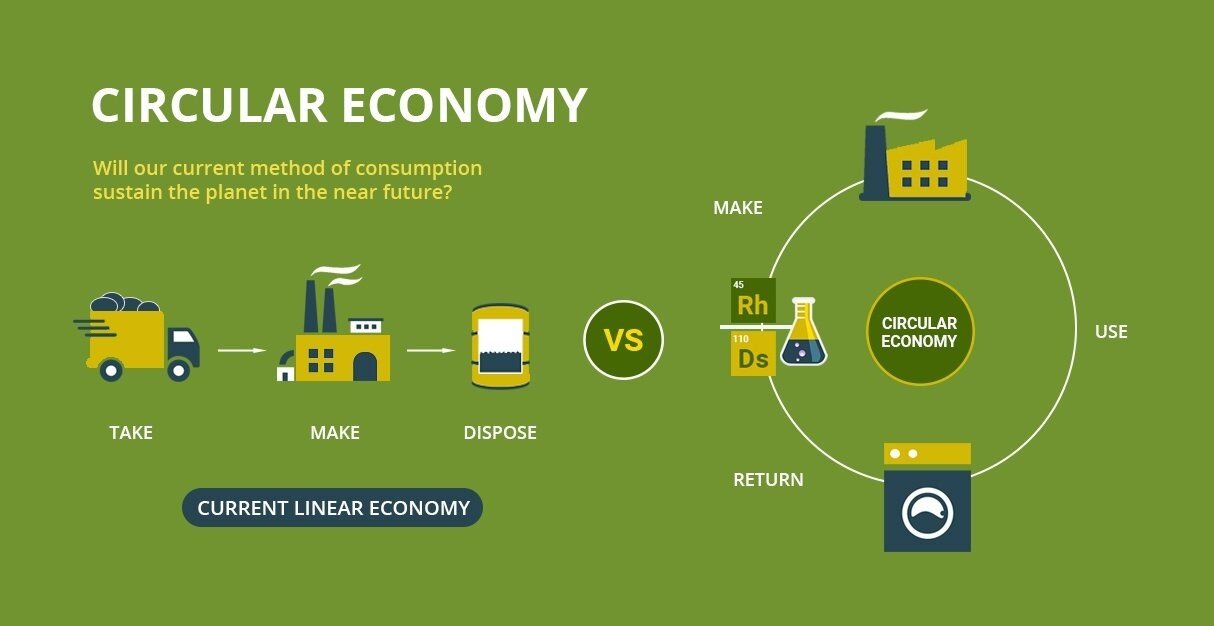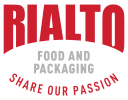The implementation of circular economies on all levels is becoming more important as the strain on natural resources for raw material increases. More than 100 billion tons of resources are used in global economies and only 8,6% get recycled (World Resources Institute, Feb 2021). In the past, linear economies were dominant, where products get manufactured from natural resources and thereafter disposed of. Should this trend of supporting linear economies continue, we would need 1,5 Earths to provide the required raw materials. As a result, we find ourselves in a precarious position on earth where limited natural resources are used and wasted. Institutions have realized the implications of the linear model and have recently introduced sustainable economy policies to reduce the impact on the environment. The alternative is the circular economy model.
What is the definition of a circular economy?
“A circular economy is an industrial system that is restorative or regenerative by intention and design. It replaces the end-of-life concept with restoration, shifts towards the use of renewable energy, eliminates the use of toxic chemicals, which impair reuse and return to the biosphere, and aims for the elimination of waste through the superior design of materials, products, systems, and business models.” (Source: World Economic Forum)
The circular economy model is based on three principles
– Design out waste and pollution
– Keep products and materials in use
– Regenerate natural systems
What are the benefits of a circular economy? The main aim with a circular economy is to be regenerative and to improve resources’ performance. As a result, the following occurs:
– Reduction in the use of resources
– Reduction in waste production
– Limitations of energy consumption
– Enables the prospect of sustainable growth
– Creation of new services and job opportunities
The circular economy model covers the complete production cycle. Starting with the usage of sustainable raw materials, the redesign of efficient production processes, and lastly the redesign of products for repair, reuse, and recycling. Therefore, waste will enter the production cycle again as secondary raw material. The contribution of recycled material as secondary raw material into the economy decreases the demand for natural resources, reduces the environmental footprint of production and consumption, and secures the future supply of raw materials.
In summary in alignment with the demands of eco-sensitive consumers and companies wanting to improve their “green image” changing towards more sustainable models like the circular economy cannot be delayed or ignored.

Source: Resource.temarry.com
In Innova Market Insights 2021 Consumer Survey, 34% of the survey participants in the UK and 38% in the US respectively agree to pay more for sustainable packaging. A wide range of sustainable food packaging alternatives are on offer, the choices are determined by the type of food requiring the packaging. Recycling or reusing food packaging reduces single-use plastic packaging ending up in landfills but can be impractical due to food contamination which causes problems in the waste management stream, slow collection rate, and not being viable.
In situations where recycling or reusing is not an option, compostable food packaging made from renewable plant-based material is a smart solution to replace single-use plastic items. To apply the circular economy model, the compostable packaging is collected and placed into a compost facility. Food scraps and residue collected with the packaging poses no problem to the composting process and is a benefit to the compost by being a source of nitrogen which enhances plant growth. Compostable packaging can play an integral role in returning nutrients to regenerate soils and decrease the impact of packaging on the environment. A good example of compostable food packaging is bagasse food containers. At Multi-cup Solutions we offer a wide range of bagasse and other compostable food packaging.
It is important that the implemented circular model allows the company to be efficient without added burdens and improves productivity. The circular economy model is underpinned by solid social and economic motives. The circular economy principles support the 17 sustainable development goals set out by the UN Decade on Ecosystem Restoration ( https://sdgs.un.org/goals). See Green Gazette June 2021(www.multicup.co.za).
For a transition to take place there will be economic and social costs involved, such as investment into new materials, infrastructure, specialized training of staff. Recently at a lecture at University of Pretoria, Andre de Ruyter (Eskom’s group chief executive) stated that South Africa is at an energy crossroad, and the path to a competitive future lies in green energy. Currently our economy is 25% more carbon intensive than China and double the global average. (www.dailymaverick.co.za/article /2021-08-17).
Keeping the current state of the planet in mind the question remains at what speed must the transition from linear to circular economy take place.
The recently gazetted regulations regarding EPR fees and mandatory payment of fees will be an incentive for producers to rethink the design of their products to become more environmentally friendly. As a company Multicup Solutions has either joined or in the process of becoming members of the relevant PRO’s to be compliant with the section 18 regulations of the National Environmental Management: Waste Act (Act No 59 of 2008).









Leave A Comment
You must be logged in to post a comment.